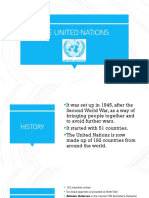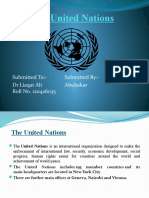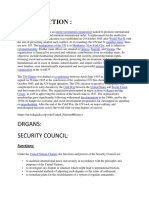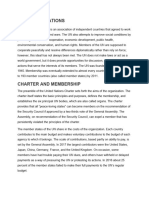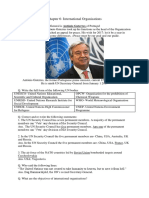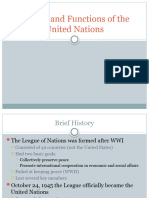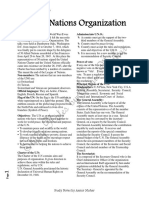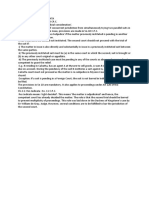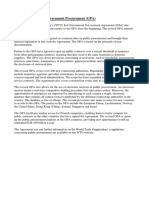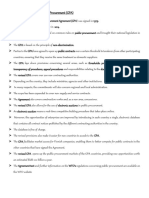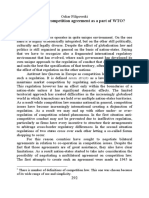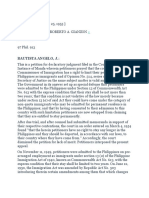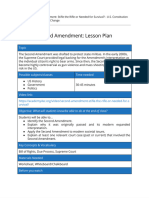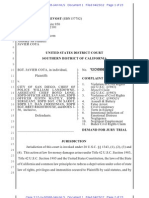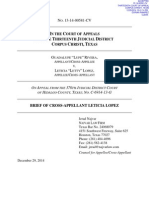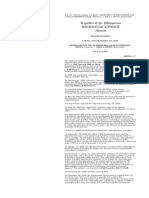0% found this document useful (0 votes)
168 views6 pagesThe United Nations: First World War
The United Nations was formed in 1945 after the devastation of World War II to promote international cooperation and prevent future wars. It has six main organs: the General Assembly, Security Council, Economic and Social Council, Trusteeship Council, International Court of Justice, and Secretariat. The UN aims to maintain peace and security, protect human rights, and work towards solving economic, social and humanitarian issues around the world.
Uploaded by
sreedevi sureshCopyright
© © All Rights Reserved
We take content rights seriously. If you suspect this is your content, claim it here.
Available Formats
Download as PDF, TXT or read online on Scribd
0% found this document useful (0 votes)
168 views6 pagesThe United Nations: First World War
The United Nations was formed in 1945 after the devastation of World War II to promote international cooperation and prevent future wars. It has six main organs: the General Assembly, Security Council, Economic and Social Council, Trusteeship Council, International Court of Justice, and Secretariat. The UN aims to maintain peace and security, protect human rights, and work towards solving economic, social and humanitarian issues around the world.
Uploaded by
sreedevi sureshCopyright
© © All Rights Reserved
We take content rights seriously. If you suspect this is your content, claim it here.
Available Formats
Download as PDF, TXT or read online on Scribd
/ 6
